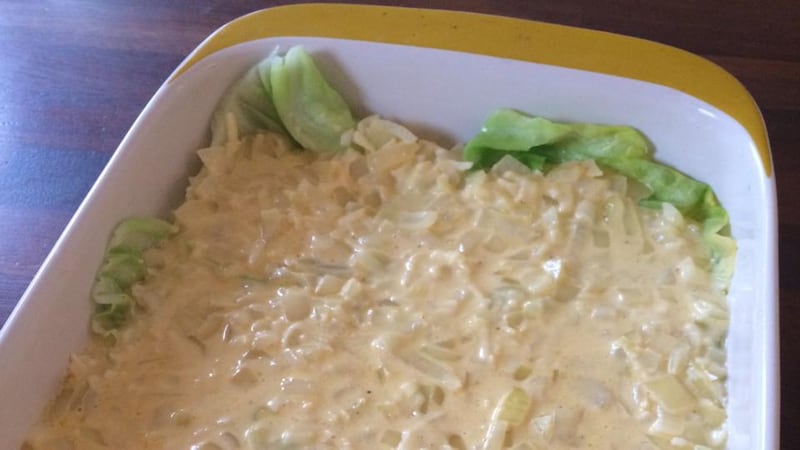'The past is a foreign country: they do things differently there," is the famous first sentence of LP Hartley's novel The Go-Between. It's true. The past is a place that becomes gradually more unfamiliar as we drift further onwards away from it.
This summer, I’m going back in time to look at some of those places in the past, via vintage books and magazines. Social history of an era is perhaps most easily found in mass-produced printed material such as advertisements, recipes, advice, news and photographs.
Without setting out in any formal way to make a collection, over time I have amassed many vintage magazines and books. I have an ad-hoc stack of old House and Garden magazines from the 1950s and 1960s, Cosmopolitans from the 1960s, Time magazines from several decades, etiquette books, cookery books and travel books.

Over the next few weeks I will be using these books and magazines to compare trends, advice and news of a bygone time with the present. I’m having myself a vintage summer. This week, it’s about cooking, 1970s style.
Fish mousse and aspic
Meals for Every Occasion is the cheerfully ambitious title of a 1976 cookery book I found in a charity shop years ago. I didn't buy it for the shudder-inducing recipes – sausage bolster, turkey and tongue galatine, mock cannelloni, cheesy fish mousse, sardine cartwheels and dozens of other dishes featuring aspic, food colouring and jellied meat stock.
I bought it because of lines such as this: for a “romantic dinner for two”, the chef is earnestly advised, “the day before the dinner, don’t forget to clean and tidy up the rooms that he will see. It could spoil a beautiful image he has of you if, while he idles, he strikes dust upon the shelves.”
And this, from “teenage party for 14”: “Joss sticks provide an exotic, almost sinful air without, of course, being in the least harmful . . . Lock up your drinks cupboard. Your own son or daughter may have more sense and honesty than to touch your whisky, but it takes only one of his or her friends in high spirits to start an orgy.”
I had to read that sentence several times. I’m still not quite clear what the author was suggesting those 14 teenagers might get up to when unsupervised.
The introduction promises that using the book will guarantee “perfect eating results”. In the illustrations, diners sport tank tops, stripy jumpers and polo necks and are rarely without a cigarette. There is an awful lot of brown everywhere: in the clothing, crockery, interiors and food departments. Clearly no food stylist was employed on this project; the “smooth carrot puree” dish has been forked up into a spaceship-type mound, sprinkled with parsley, and surrounded, bizarrely, by slices of lemon. It looks utterly revolting.
Some of the names of the recipes are a mystery to me. Take the dessert, “Danish peasant girl with a veil”. It involves apples, cinnamon and cream. I’d love to know if it was ever served up to an actual Danish girl. There’s also a fish dish called “Whiting Spencer Tracy”. Or “Playgoer’s Mousse”, which uses curry powder, concentrated consommé and lumpfish roe; and “orange chiffon fiesta”, a horrid-sounding dessert that includes “concentrated frozen canned orange juice”, gelatine and margarine.
Cooking challenge
My vintage challenge is to cook a time- travel dish from this 1976 book, and serve it to 2014 guests. My dilemma is: should I choose the nastiest recipe I can find or choose one they might actually eat? In the end, I think the least objectionable option is the sole vegetarian recipe in the book.
“A meal without meat for four” features mushroom-stuffed tomatoes and Alsatian cabbage flan. “A vegetarian coming for dinner throws the average hostess into confusion,” frets the SOS-like opening lines of the recipe. “How can you even begin to think up a menu if there is no fish or meat to plan it round?”
Two of my guests, Joyce and June, are in fact vegetarian. I am not, and neither is the fourth guest, Henry. But neither the carnivores nor herbivores among us have eaten cabbage flan before.
I decide it is prudent to keep the menu a surprise for June and Henry, after I reveal it to Joyce in advance and get a “yuck” in response. I do hope vegetarian guests in 1976 were more polite to their hostesses.
The baked stuffed tomatoes are as bland as they sound. “They remind me of home economics at school,” says Joyce.
The only other time I have made baked stuffed tomatoes was actually in home economics, back in the last century, which is probably why I am having grim food flashbacks.
Vegetarians of the past
What did vegetarians eat in the 1970s? "Vesta curries with rice and veg," recalls Henry. "I remember eating that in front of the telly, watching Doctor Who. I wasn't vegetarian, though."
“Everything was full of MSG,” says June. “And everyone smoked at dinner and drank oceans of Blue Nun and thought they were very sophisticated.”
I am almost afraid to produce the cabbage flan from the oven. The recipe substitutes cabbage leaves for pastry. The filling is egg-based, with mustard, cheese, onions and sour cream. Uncooked, it looks spectacularly unappetising. The photographer, who calls before the guests arrive, all but snorts in derision when he sees it. The best thing about it, I conclude, is the lovely yellow, 1970s-style dish in which it was being baked.
My guests are only dying to be disgusted. We all take small bites.
“It’s nice,” Joyce says in amazement, sounding bitterly disappointed.
“It can’t be,” I say, equally amazed and disappointed.
While it will never be on the menu at Noma, it is perfectly edible, which is my key concern.
“I want the recipe,” says June.
“We’ll cook that at home,” says Henry.
I wonder aloud if the wine (not Blue Nun) has gone to their heads. Asking for the recipe is going too far. I am thrown into confusion, like my erstwhile 1970s counterpart.
My guests eat all the cabbage flan. I’m not sure who is more surprised, me or them.
At this rate, I’ll have to try the “drinks party for 40”, which features goblins on horseback, tomato waterlilies, celery boats and an awful lot of cocktail sticks.
ALSATIAN CABBAGE FLAN: SERVES FOUR
Ingredients
700g onions
50g butter
8 cabbage leaves
3 eggs
275ml sour cream
100g cheddar cheese
5ml dry mustard
Method
1 Chop onions finely.
2 Melt butter. Add onions and cook over low heat for 25 minutes.
3 Blanch cabbage leaves in boiling salted water.
4 Beat eggs. Add sour cream and mix.
5 Grate cheese and add to mix. Add mustard powder and seasoning.
6 Beat cream and egg mixture into the onions.
7 Brush a 22.5cm tin with oil. Line with the cabbage leaves.
8 Fill with mixture.
9 Bake in centre of oven at 200 degrees for 30 minutes.

















